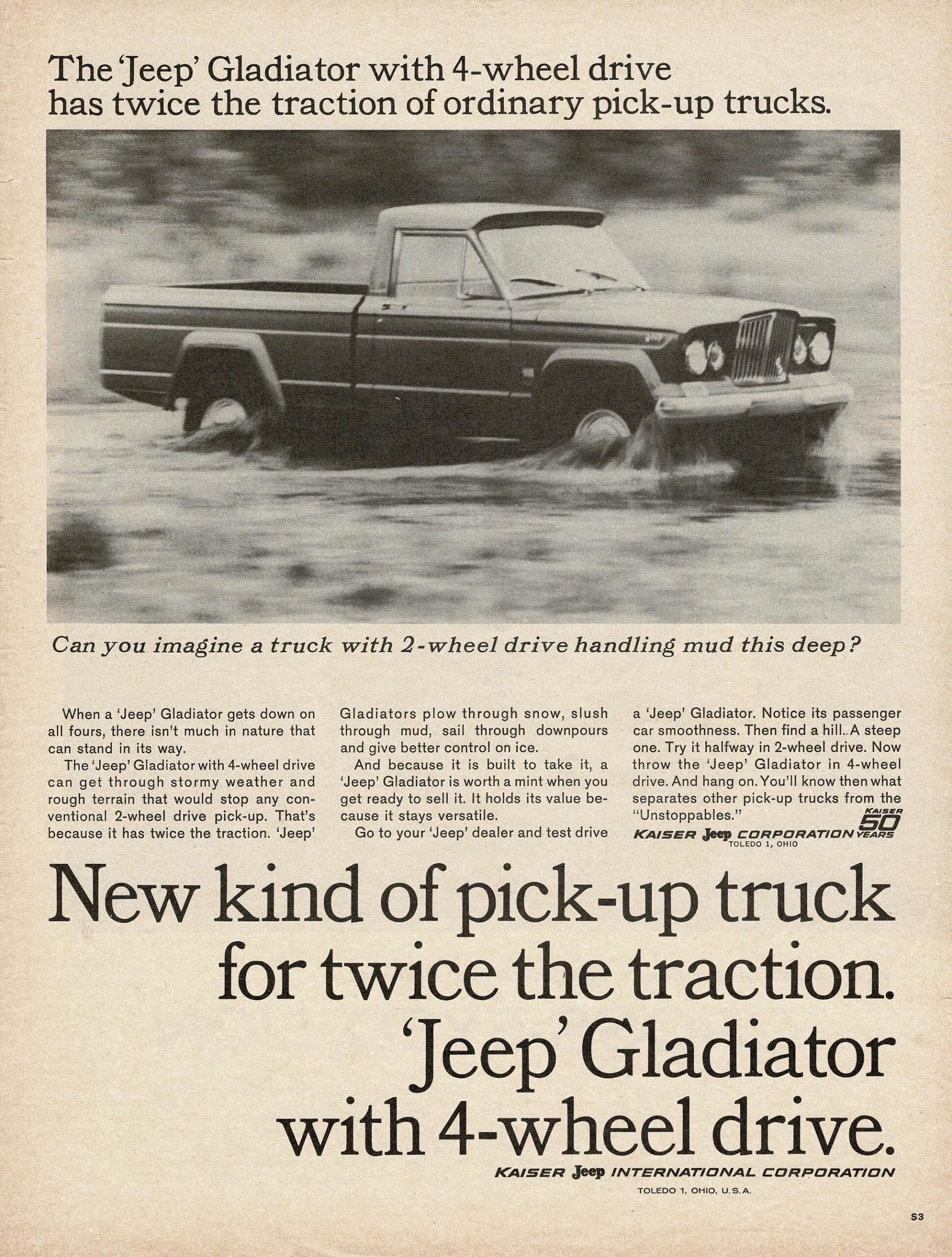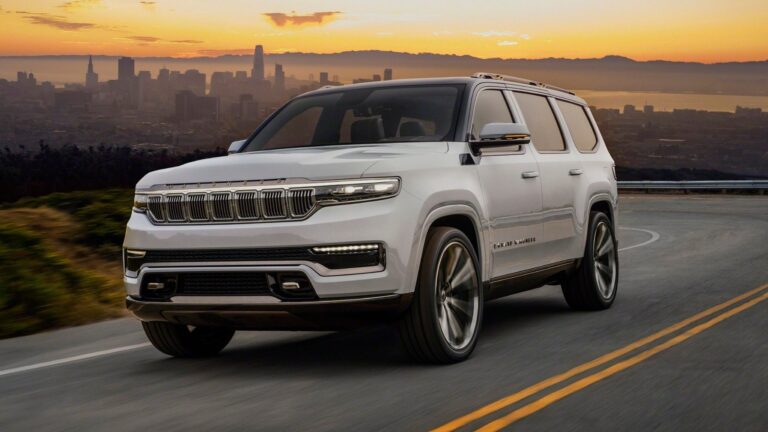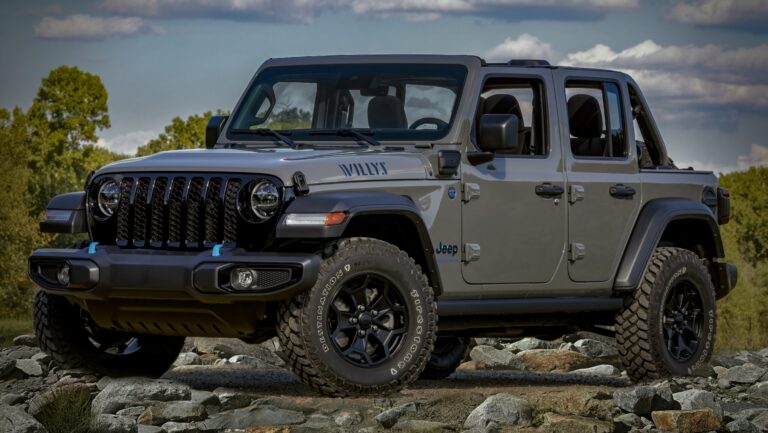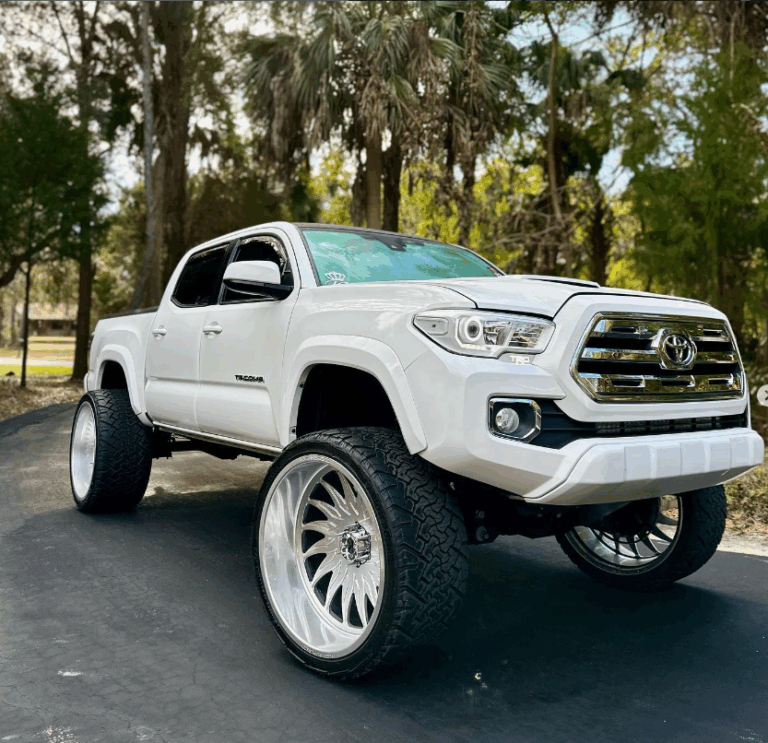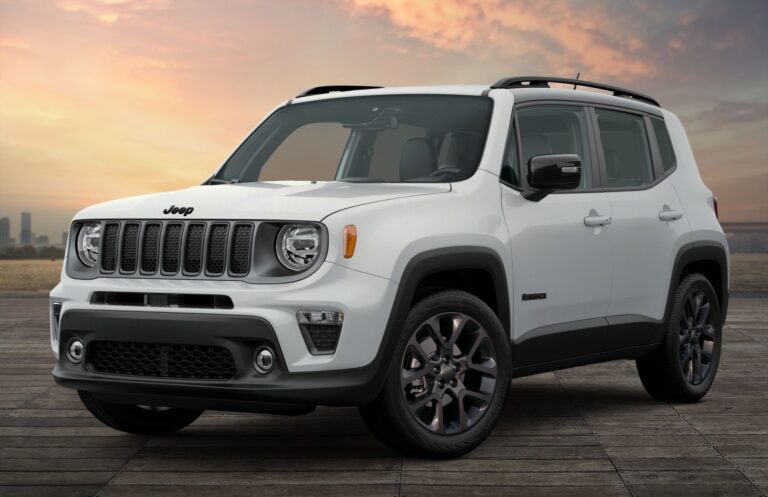1964 Jeep Gladiator (Willys) Pickup For Sale: A Comprehensive Buyer’s Guide
1964 Jeep Gladiator (Willys) Pickup For Sale: A Comprehensive Buyer’s Guide jeeps.truckstrend.com
Introduction: The Enduring Appeal of the 1964 Jeep Gladiator
The year 1964 marks a significant point in the history of American utility vehicles, particularly for the iconic Jeep brand. It was the year the Kaiser-Jeep Corporation continued production of its groundbreaking full-size pickup truck, the Jeep Gladiator. While often associated with the "Willys" legacy due to its roots in the Willys-Overland company, the 1964 Gladiator, officially designated the "J-Series," was a testament to robust engineering, practical design, and an unmistakable rugged charm. For collectors, off-road enthusiasts, or simply those seeking a unique piece of automotive history, finding a 1964 Jeep Gladiator pickup for sale represents an exciting opportunity to own a vehicle that perfectly blends utilitarian capability with vintage cool. This comprehensive guide will delve into everything you need to know about this classic truck, from its historical significance to practical advice on finding and evaluating one today.
1964 Jeep Gladiator (Willys) Pickup For Sale: A Comprehensive Buyer’s Guide
Historical Context and Legacy of the J-Series
The Jeep Gladiator, introduced in 1962, was a revolutionary step for the brand, moving beyond the CJ-series’ military-derived origins to offer a more conventional, full-size pickup truck designed for both work and family use. It replaced the aging Willys Jeep Pickup, which had been in production since 1947. The Gladiator, designed by Brooks Stevens, shared its "FSJ" (Full-Size Jeep) platform with the Wagoneer SUV, making it one of the first truly modern, comfortable, and stylish trucks available.
In 1964, the Gladiator continued its early production run under Kaiser-Jeep. It boasted a more refined ride than its predecessors and offered innovative features for its time, including independent front suspension on some 4×2 models (though solid axles were standard on 4x4s, which are more common today). Its robust construction and powerful engine options quickly earned it a reputation for reliability and capability, cementing its place as a workhorse of choice for farmers, tradesmen, and adventurous families across America. Owning a 1964 model means acquiring a vehicle from the era when the Gladiator was truly establishing its legendary status.
Key Features and Specifications of the 1964 Model
The 1964 Jeep Gladiator (J-Series) came in various configurations, offering buyers flexibility for different needs. Understanding these specifications is crucial when evaluating a truck for sale.
- Engine: The primary engine for 1964 was the "Tornado" 230 cubic inch (3.8L) Overhead Cam (OHC) inline-six engine. This engine was notable for being the first mass-produced OHC engine in an American vehicle. It offered good power for its time, typically around 140 hp. Some earlier models might have featured the older "Super Hurricane" F-head six-cylinder, but the Tornado was standard by ’64.
- Transmission: Buyers had choices between a 3-speed manual, a 4-speed manual (often with a "granny" first gear for heavy loads), or a 3-speed automatic transmission.
- Drivetrain: Gladiators were available in both 2-wheel drive (4×2) and 4-wheel drive (4×4) configurations. The 4×4 models are highly sought after today for their off-road prowess and classic rugged appeal. The 4×4 system typically featured a Dana 20 transfer case.
- Axles: Dana 44 axles were commonly used both front and rear in 4×4 models, known for their strength and durability.
- Body Styles: The 1964 Gladiator was available in several wheelbase lengths (120" and 126") and bed lengths (7-foot and 8-foot). It also came in various cab configurations, including:
- J-200 (1/2 ton) and J-300 (3/4 ton): Standard pickups, often with "Townside" (smooth side) or "Thriftside" (fendered bed) boxes.
- Panel Delivery and Stake Bed: Less common but available, offering enclosed or open utility options.

- Suspension: Standard leaf spring suspension on all 4×4 models, providing durability and load-carrying capacity. Early 4×2 models could have independent front suspension, but this is rare in surviving examples.
- Styling: The Gladiator featured a distinctive upright grille, often with vertical bars, and a robust, square-jawed appearance that still turns heads today.
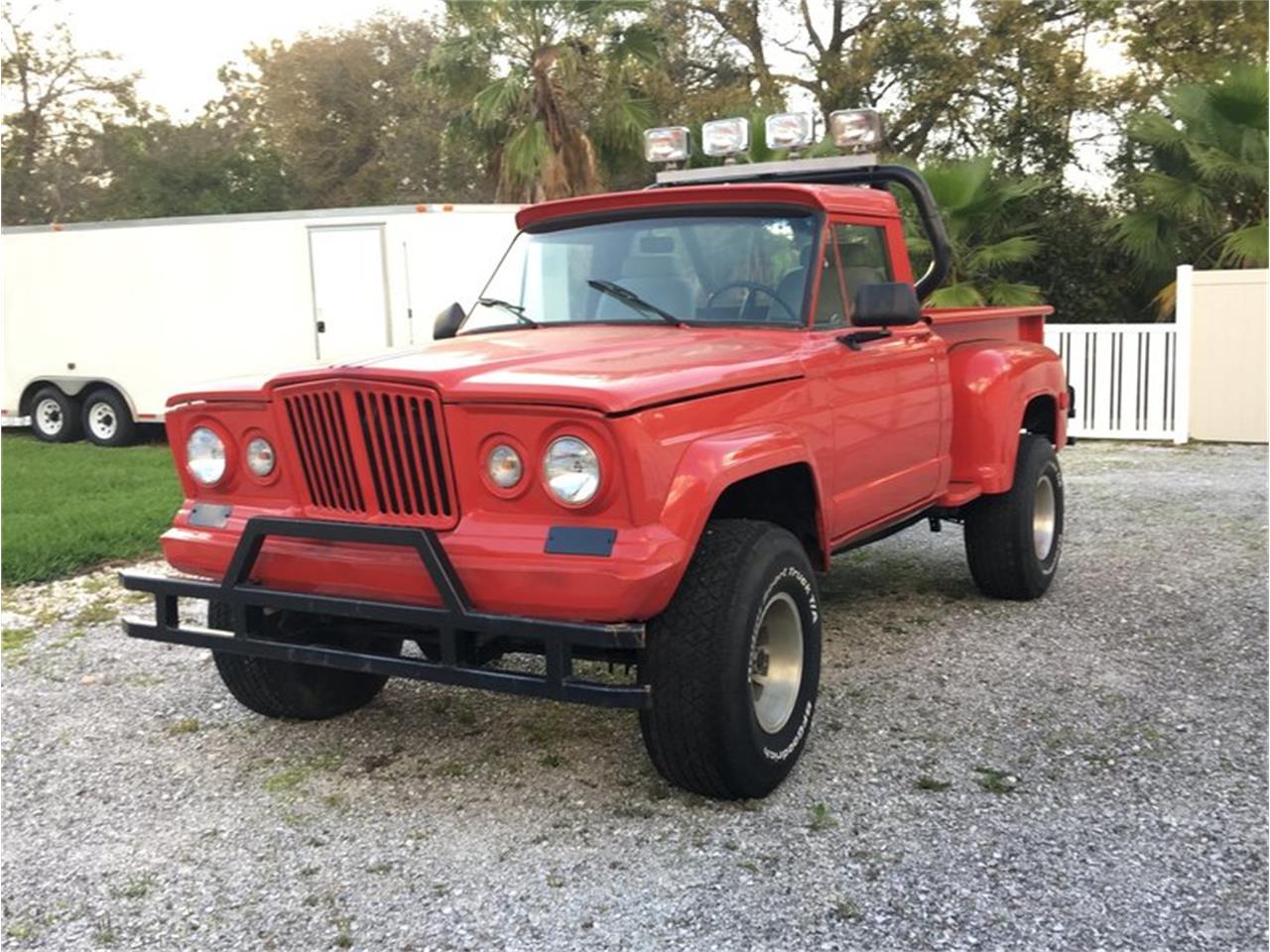

Why Buy a 1964 Jeep Gladiator Today?
Owning a 1964 Jeep Gladiator is more than just owning a vehicle; it’s an experience.
- Classic Appeal & Nostalgia: These trucks exude a timeless charm, representing a golden era of American automotive design and utility. They are instant conversation starters.
- Robust and Durable Build: Gladiators were built to last, with heavy-duty components and solid construction. Many examples still running today are a testament to their inherent ruggedness.
- Versatile Platform: Whether you’re looking for a weekend cruiser, a capable off-road rig, a unique work truck, or a canvas for a custom build, the Gladiator’s versatility is unmatched.
- Investment Potential: Well-maintained or professionally restored Gladiators are appreciating in value, making them not just a hobby but potentially a sound investment.
- Unique Driving Experience: Driving a vintage Gladiator offers a connection to the road and a mechanical feel that modern vehicles simply can’t replicate. It’s raw, engaging, and utterly distinctive.
What to Look For When Buying a 1964 Jeep Gladiator
Purchasing a classic vehicle requires careful inspection. Here’s a comprehensive checklist for evaluating a 1964 Gladiator:
- Rust: This is the primary enemy of vintage vehicles.
- Frame: Inspect the entire frame for cracks, bends, and significant rust, especially near suspension mounting points, crossmembers, and the rear axle.
- Body Panels: Check wheel wells, rocker panels, cab corners, door bottoms, floorboards, bed floor, and tailgate for rust holes or excessive surface rust. Pay attention to areas where dirt and moisture collect.
- Underbody: Look at brake lines, fuel lines, and exhaust components for corrosion.
- Engine Condition:
- Leaks: Check for oil, coolant, and fuel leaks.
- Smoke: Blue smoke indicates burning oil; white smoke can indicate coolant issues.
- Noises: Listen for knocking, ticking, or unusual sounds.
- Compression: A compression test can reveal engine health.
- Starting: Does it start easily, hot or cold?
- Transmission and Transfer Case:
- Shifting: Test all gears. Manuals should shift smoothly without grinding. Automatics should engage crisply without slipping.
- 4×4 Engagement: For 4×4 models, engage 4-High and 4-Low and drive briefly to ensure the transfer case engages properly and there are no binding issues or unusual noises.
- Fluid Leaks: Check for leaks around the transmission and transfer case.
- Drivetrain and Axles:
- U-Joints: Check for play in universal joints (U-joints) on the driveshafts.
- Differentials: Listen for unusual noises from the axles during turns or acceleration.
- Wheel Bearings: Check for play by rocking the wheels.
- Suspension and Steering:
- Leaf Springs: Look for broken or sagging leaf springs.
- Shocks: Check for leaks or signs of wear.
- Steering Play: Excessive play in the steering wheel indicates worn steering box, tie rods, or ball joints.
- Brakes:
- Pedal Feel: The pedal should be firm, not spongy, and hold pressure.
- Stopping Power: Test braking at various speeds.
- Leaks: Check brake lines and wheel cylinders for leaks. Most Gladiators will have drum brakes.
- Electrical System:
- Lights: Test all exterior and interior lights.
- Gauges: Ensure all gauges (fuel, temp, oil pressure, speedometer) are functional.
- Wiring: Look for frayed, brittle, or aftermarket "rat’s nest" wiring, which can be a fire hazard.
- Interior:
- Seats: Check for tears, rips, and proper support.
- Dashboard: Look for cracks or missing components.
- Floor: Check for rust under the floor mats.
- Windows/Doors: Ensure windows roll up/down and doors open/close properly.
- Documentation:
- Ensure a clear, transferable title matching the VIN.
- Service Records: Any history of maintenance or repairs is a bonus.
- Originality: Note any modifications from stock. While some upgrades are desirable, extensive, poorly executed modifications can be a red flag.
Restoration vs. Driver Condition
When searching for a 1964 Gladiator, you’ll likely encounter vehicles in varying states of condition:
- Project Vehicle: These are typically the most affordable but require extensive work (bodywork, mechanical overhaul, interior, paint). Ideal for someone with significant mechanical skills, a dedicated workspace, and a substantial budget for parts and time.
- Driver Quality: These trucks are functional and can be driven as-is, but may have cosmetic flaws, minor mechanical issues, or older repairs. They offer a good balance for someone who wants to enjoy the truck immediately and perhaps improve it over time.
- Restored/Show Quality: These command the highest prices, having undergone professional, comprehensive restorations. They are often ready for car shows or immediate enjoyment without major work. Verify the quality of the restoration.
Finding a 1964 Jeep Gladiator For Sale
- Online Marketplaces: Websites like eBay Motors, Bring a Trailer, Hemmings, ClassicCars.com, and specific Jeep forums are excellent resources.
- Classic Car Dealerships: Reputable dealers specializing in vintage vehicles often have Gladiators in their inventory.
- Auctions: Live and online auctions can be good places, but due diligence is even more critical as "as-is" sales are common.
- Local Listings: Craigslist, Facebook Marketplace, and local classifieds can sometimes yield hidden gems.
- Word of Mouth: Attend local car shows and talk to enthusiasts; they often know of vehicles for sale.
Post-Purchase Considerations
Once you’ve acquired your 1964 Gladiator, here are a few things to keep in mind:
- Maintenance: Stick to a regular maintenance schedule. Vintage vehicles require more attention than modern ones.
- Parts Availability: While not as abundant as for more popular classics, many mechanical parts are shared with other Jeeps or common vehicles of the era. Body panels and specific trim pieces can be harder to find, but specialist suppliers and reproduction parts exist.
- Upgrades: Common upgrades include disc brake conversions, power steering, modern alternators, and engine swaps for improved performance or reliability. Plan these carefully to maintain the vehicle’s character.
- Insurance: Look into classic car insurance policies, which often offer better coverage and rates for vintage vehicles than standard auto insurance.
Price Table: Estimated Values for a 1964 Jeep Gladiator Pickup
Please note: Prices for classic vehicles fluctuate significantly based on condition, originality, mileage, location, market demand, and specific features (e.g., 4×4 vs. 4×2, engine/transmission combination). The values below are estimates and should be used as a general guide.
| Condition Category | Estimated Price Range (USD) | Key Characteristics & Considerations |
|---|---|---|
| Project Vehicle | $3,000 – $8,000 | Requires significant restoration (rust repair, mechanical overhaul, paint, interior). May not be running or drivable. Ideal for experienced DIY restorers. |
| Driver Quality | $9,000 – $20,000 | Runs and drives reliably. May have cosmetic flaws (dents, faded paint, worn interior) and minor mechanical issues. Can be enjoyed immediately and improved over time. |
| Good Original | $20,000 – $35,000 | Well-preserved, mostly original condition. Minor wear consistent with age, but no major rust or mechanical problems. Ready for shows or regular classic cruising. |
| Restored/Show | $35,000 – $60,000+ | Professionally restored to high standards. Excellent paint, bodywork, interior, and fully sorted mechanicals. May be concours-ready or very high-end custom. Prices can exceed this for exceptional examples or rare configurations. |
Disclaimer: These prices are approximate and can vary widely. Always conduct thorough research and consider a pre-purchase inspection by a qualified mechanic specializing in classic vehicles.
Frequently Asked Questions (FAQ) about the 1964 Jeep Gladiator
Q1: Are parts readily available for a 1964 Jeep Gladiator?
A1: Mechanical parts, especially engine (Tornado OHC), transmission, and axle components, are generally available through specialist classic Jeep suppliers or general auto parts stores (many components were shared with other vehicles). Body panels and specific trim pieces can be harder to find but are available through reproduction companies or by searching salvage yards and online forums.
Q2: What’s the difference between a "Gladiator" and a "Willys" pickup from this era?
A2: The 1964 truck is officially a "Jeep Gladiator" (J-Series). While the company had historical ties to "Willys-Overland," the distinct "Willys Jeep Pickup" model was replaced by the Gladiator in 1962. However, many people still refer to these older Jeeps colloquially as "Willys" due to the brand’s long-standing heritage.
Q3: Can a 1964 Jeep Gladiator be a daily driver?
A3: While possible, it’s generally not recommended for primary daily driving unless extensively modernized (e.g., engine swap, power steering, disc brakes, A/C). They lack modern safety features, comfort, and fuel efficiency. They are best suited as weekend cruisers, hobby vehicles, or occasional work trucks.
Q4: What are the common issues to look out for on these trucks?
A4: Rust (especially in cab corners, rockers, floorboards, and bed), worn steering components (leading to excessive play), aging electrical systems, and potential issues with the unique Tornado OHC engine (though a well-maintained one is robust). Drum brakes can also be a point of concern for modern driving.
Q5: How much does it cost to restore a 1964 Jeep Gladiator?
A5: Restoration costs vary wildly based on the initial condition of the truck, the desired level of finish, and whether you do the work yourself or hire professionals. A full, professional restoration can easily cost $30,000 to $60,000+, potentially exceeding the final market value of the truck. DIY restoration can significantly reduce labor costs but still requires substantial investment in parts.
Q6: Is the Tornado OHC engine reliable?
A6: The Tornado OHC engine was advanced for its time. When properly maintained, it is a robust and reliable engine. However, neglect can lead to issues with the overhead camshaft mechanism. Parts specific to the OHC head can be harder to source than for traditional pushrod engines, but they are available.
Conclusion
The 1964 Jeep Gladiator (Willys) Pickup is more than just a vintage truck; it’s a piece of American automotive heritage, embodying rugged individualism and enduring utility. For those seeking a vehicle with character, capability, and a compelling story, a Gladiator offers an unparalleled ownership experience. While purchasing one requires careful consideration of its condition and potential restoration needs, the reward of bringing this classic workhorse back to life, or simply enjoying it as a robust driver, is immense. Whether you envision it as a show-stopping restoration, a capable off-road adventurer, or a unique vehicle for weekend excursions, the 1964 Jeep Gladiator stands ready to deliver a truly authentic and satisfying journey. Embrace the legacy, understand the commitment, and you’ll find that owning a piece of Jeep history is a decision you won’t regret.
